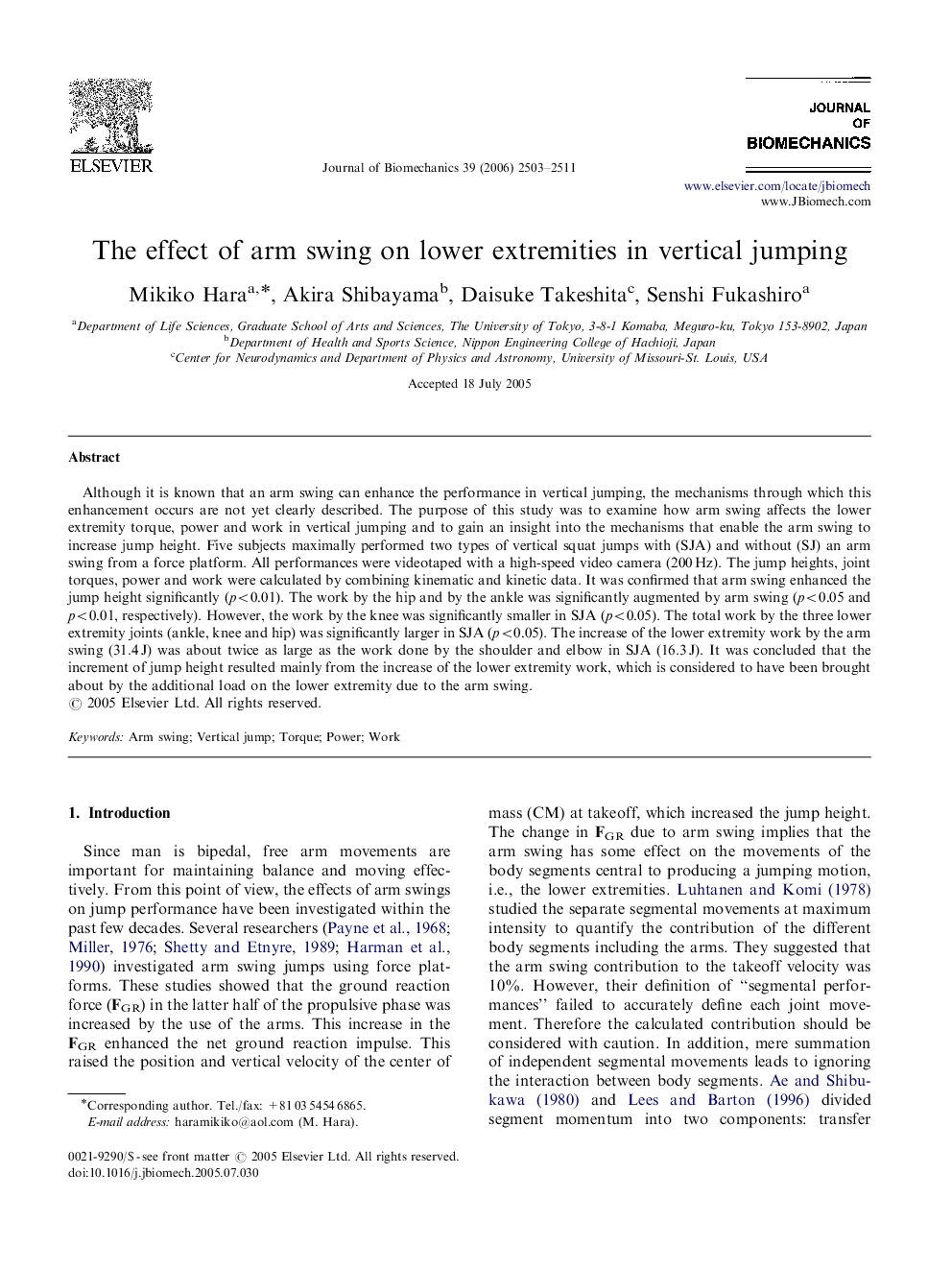| Article ID | Journal | Published Year | Pages | File Type |
|---|---|---|---|---|
| 875144 | Journal of Biomechanics | 2006 | 9 Pages |
Although it is known that an arm swing can enhance the performance in vertical jumping, the mechanisms through which this enhancement occurs are not yet clearly described. The purpose of this study was to examine how arm swing affects the lower extremity torque, power and work in vertical jumping and to gain an insight into the mechanisms that enable the arm swing to increase jump height. Five subjects maximally performed two types of vertical squat jumps with (SJA) and without (SJ) an arm swing from a force platform. All performances were videotaped with a high-speed video camera (200 Hz). The jump heights, joint torques, power and work were calculated by combining kinematic and kinetic data. It was confirmed that arm swing enhanced the jump height significantly (p<0.01)(p<0.01). The work by the hip and by the ankle was significantly augmented by arm swing (p<0.05(p<0.05 and p<0.01p<0.01, respectively). However, the work by the knee was significantly smaller in SJA (p<0.05)(p<0.05). The total work by the three lower extremity joints (ankle, knee and hip) was significantly larger in SJA (p<0.05)(p<0.05). The increase of the lower extremity work by the arm swing (31.4 J) was about twice as large as the work done by the shoulder and elbow in SJA (16.3 J). It was concluded that the increment of jump height resulted mainly from the increase of the lower extremity work, which is considered to have been brought about by the additional load on the lower extremity due to the arm swing.
